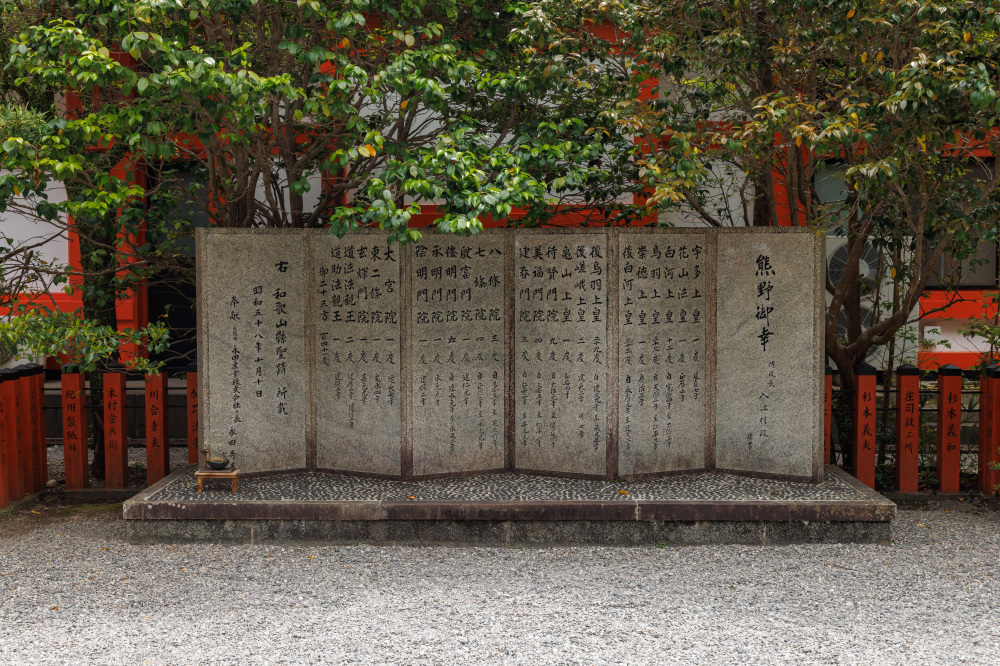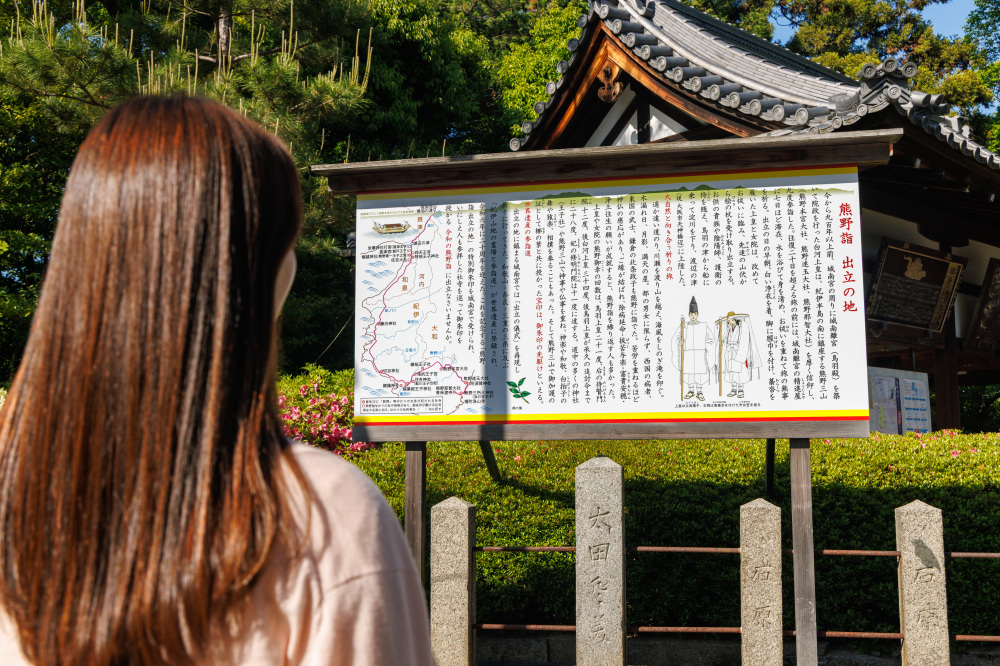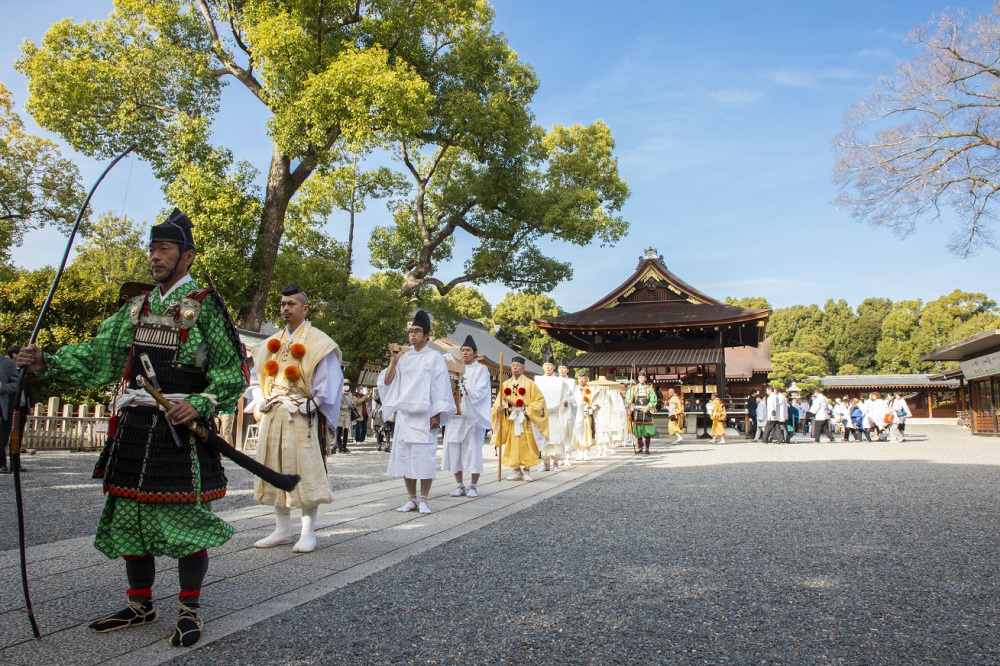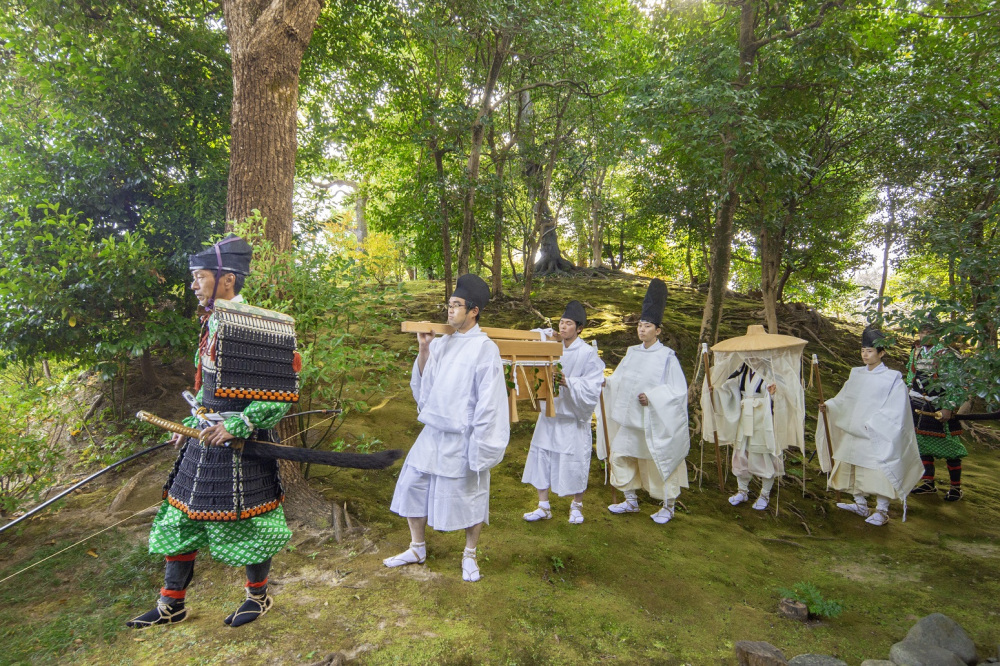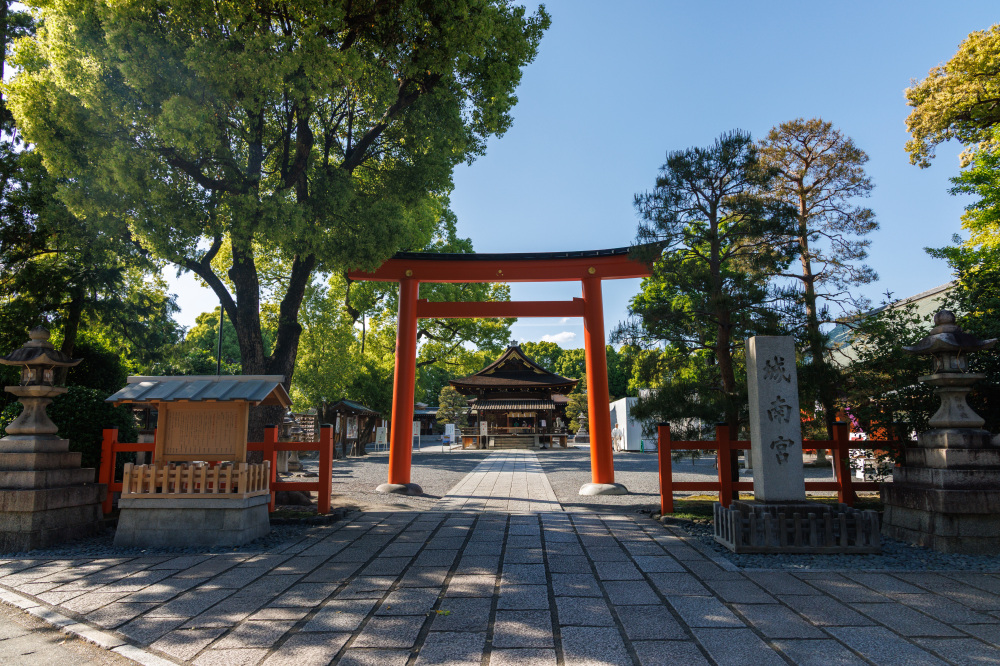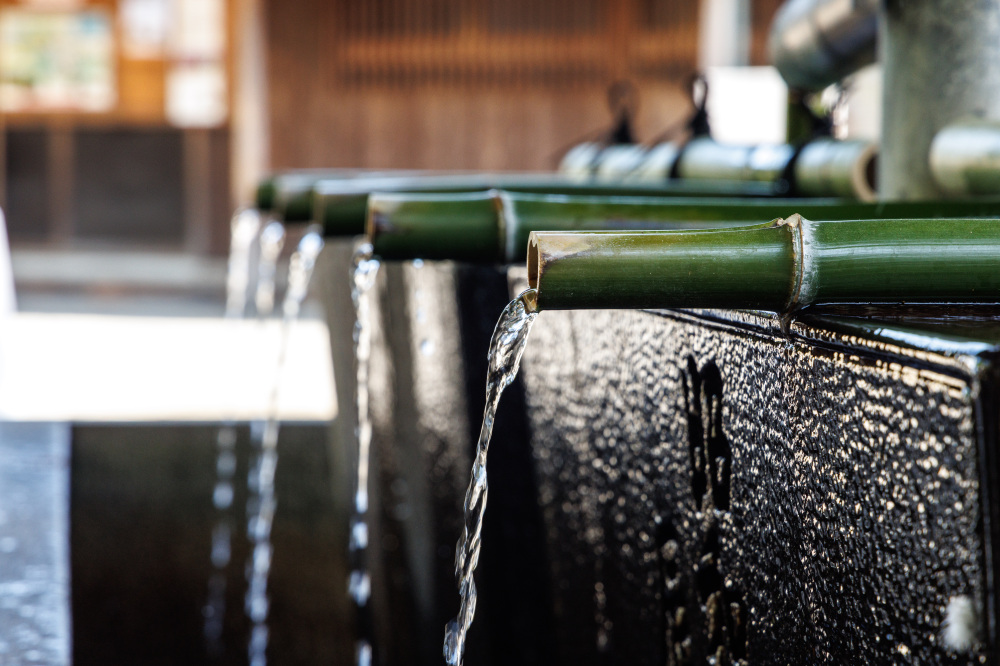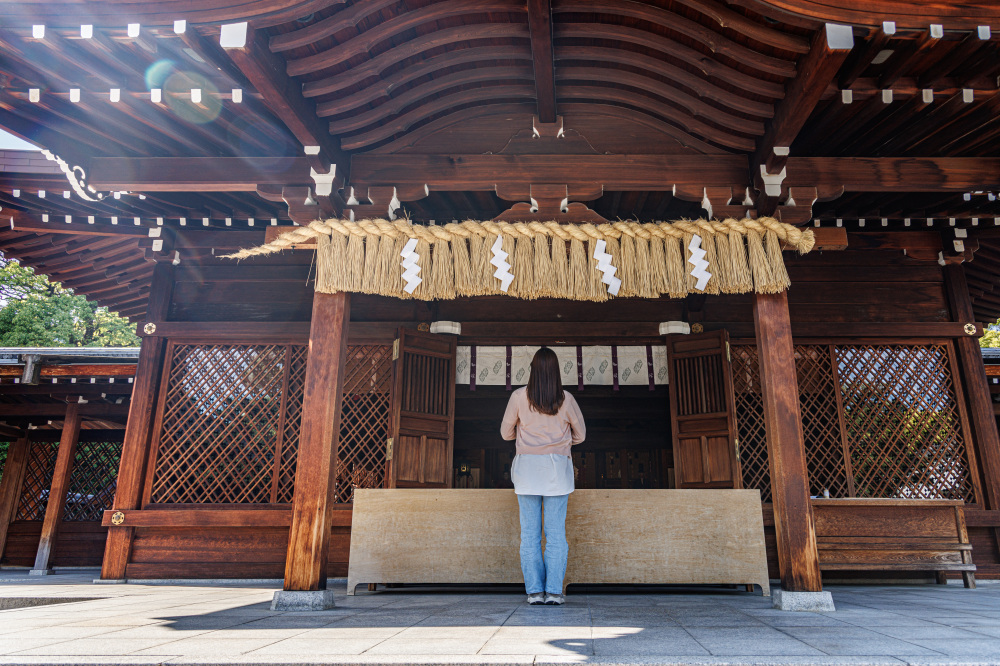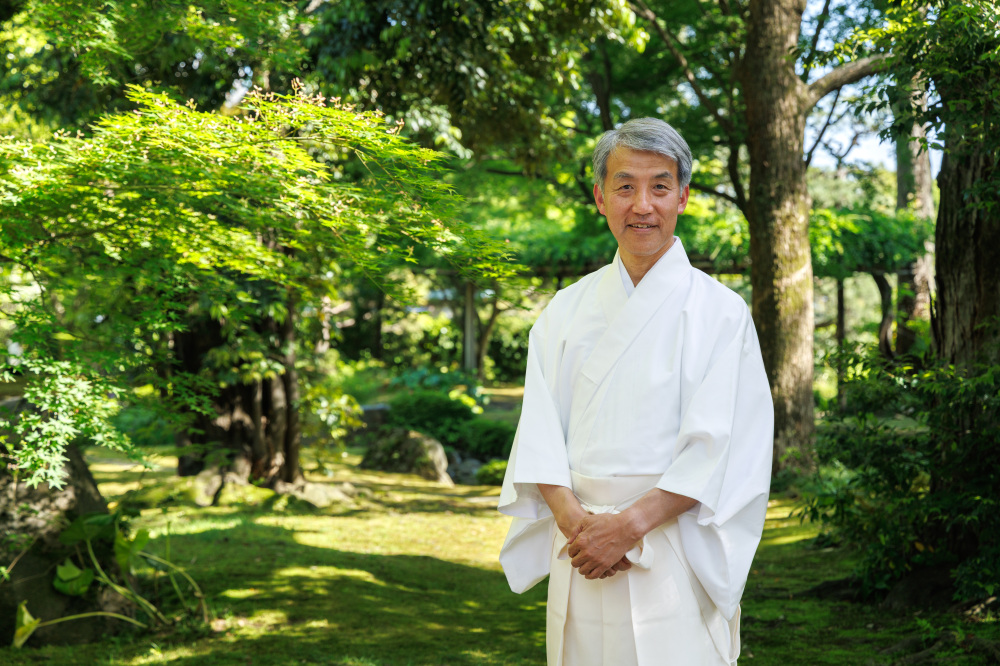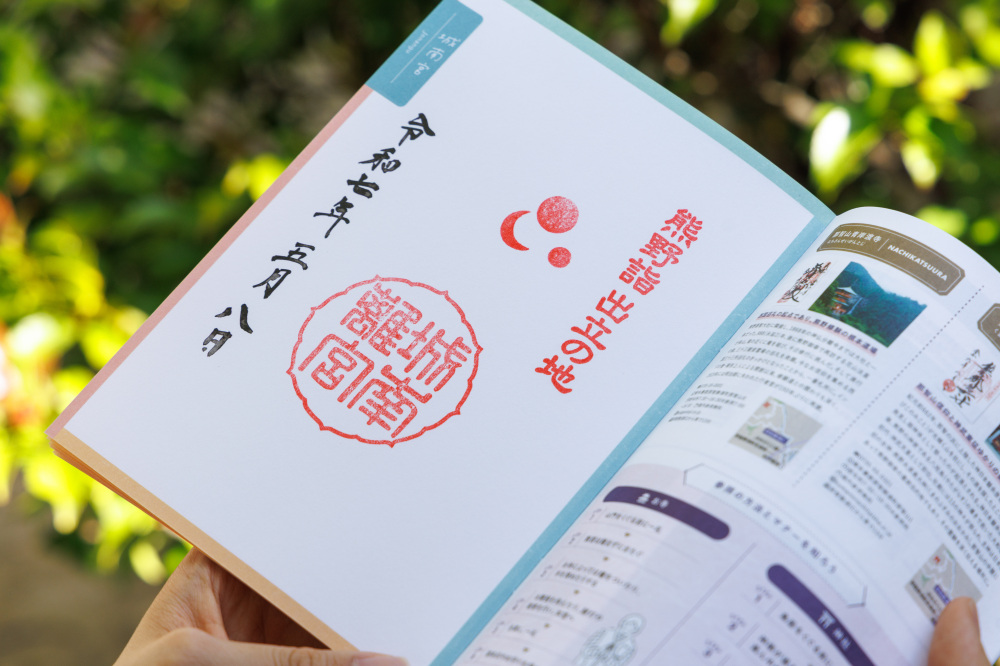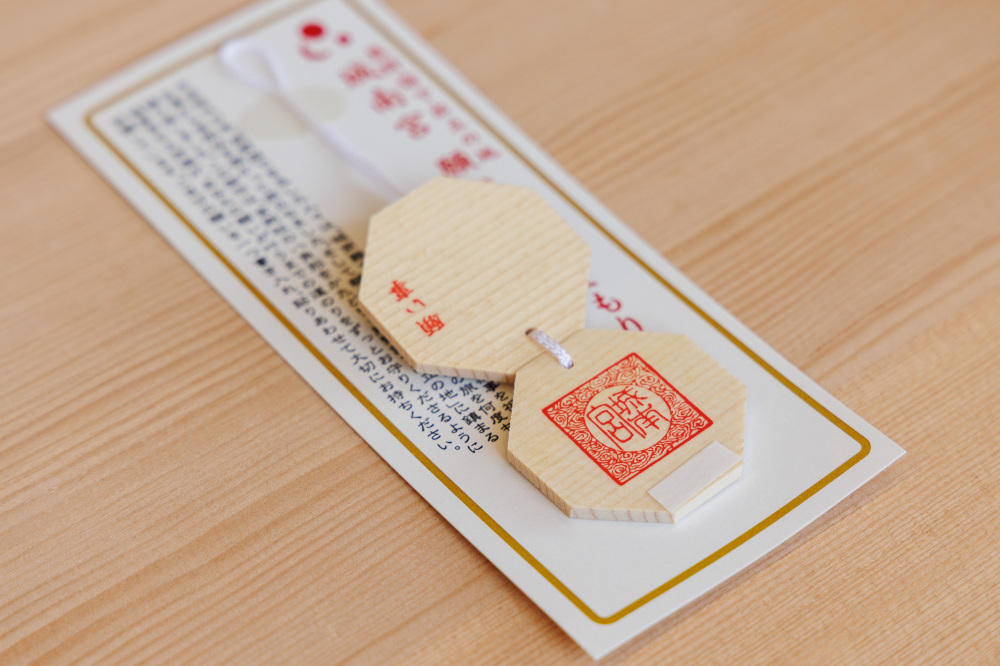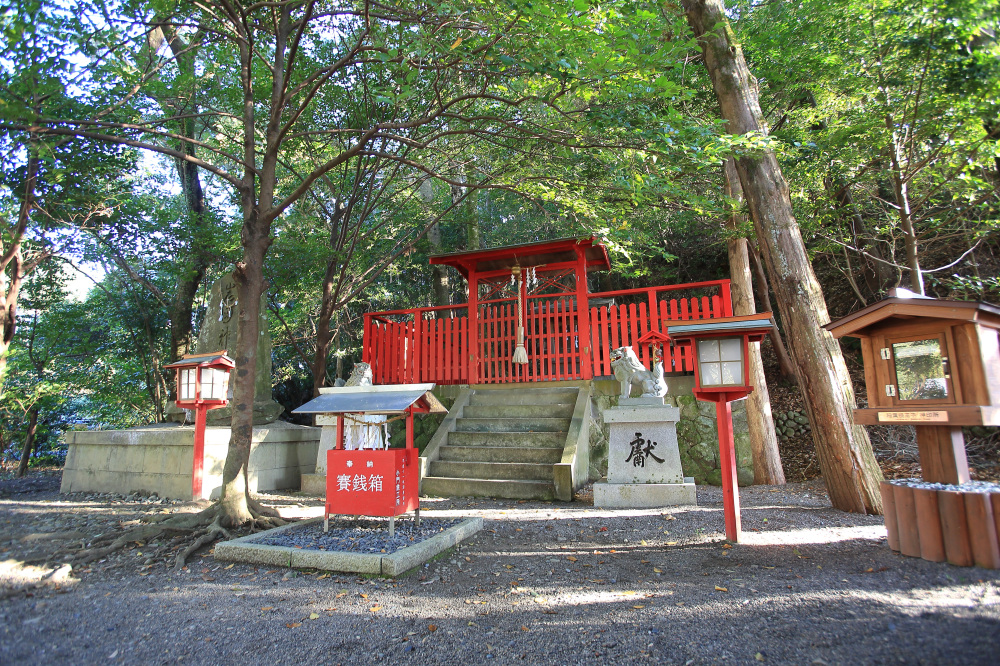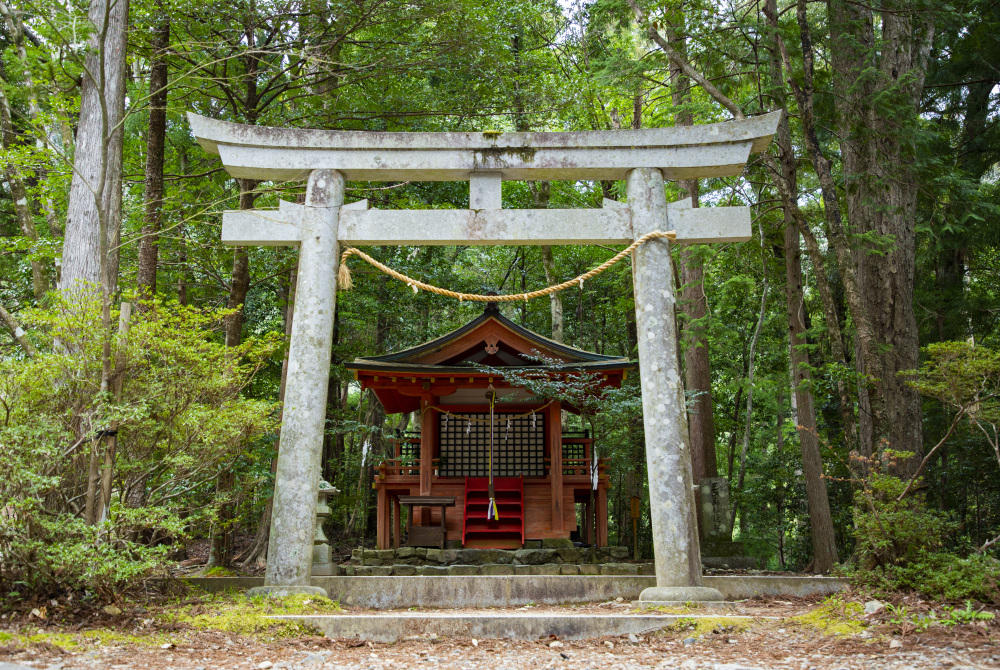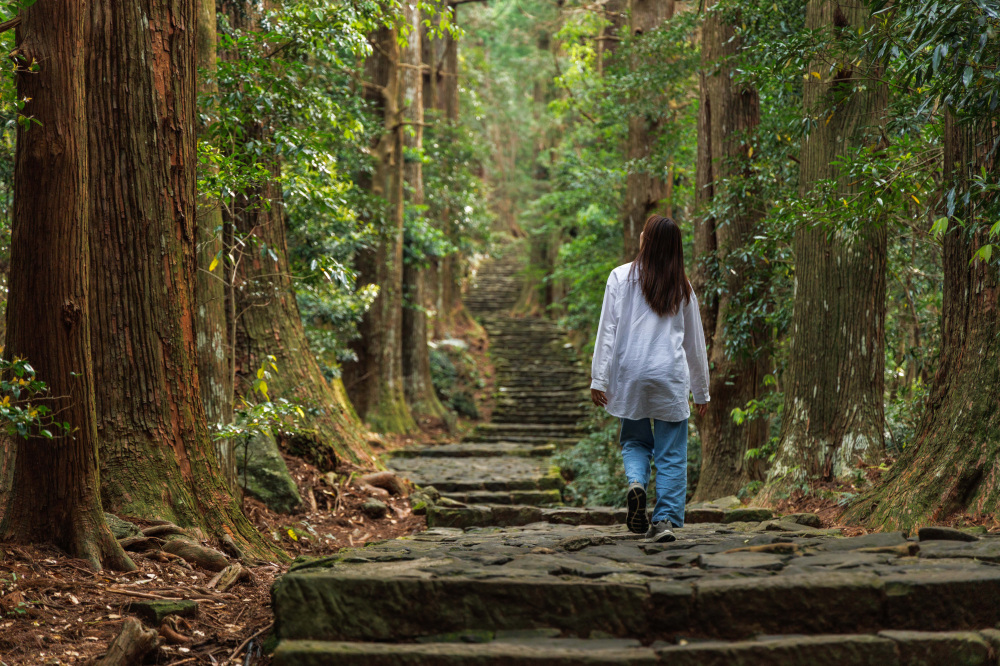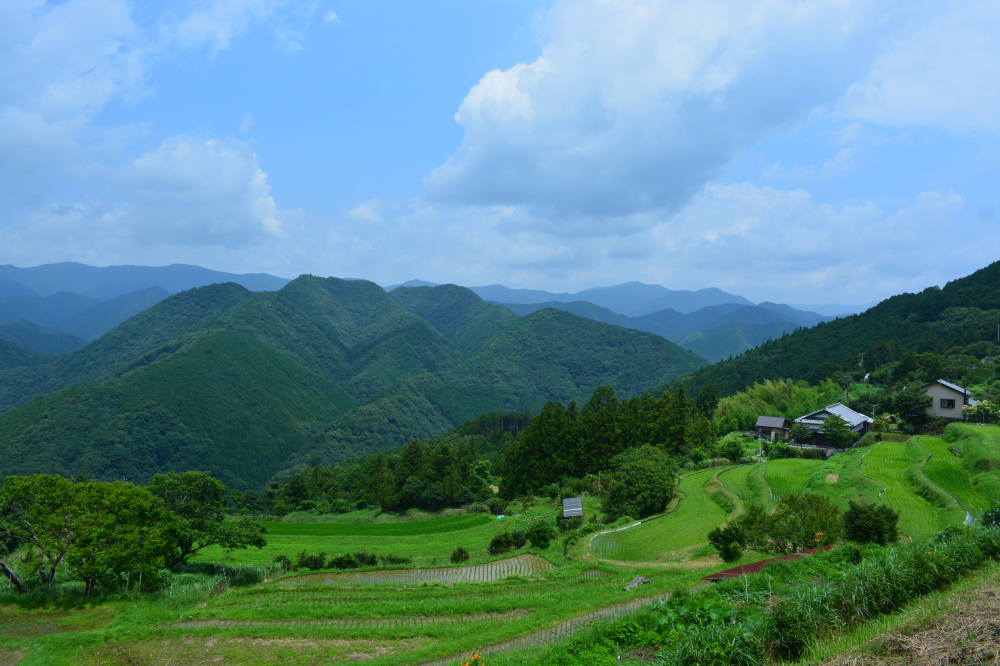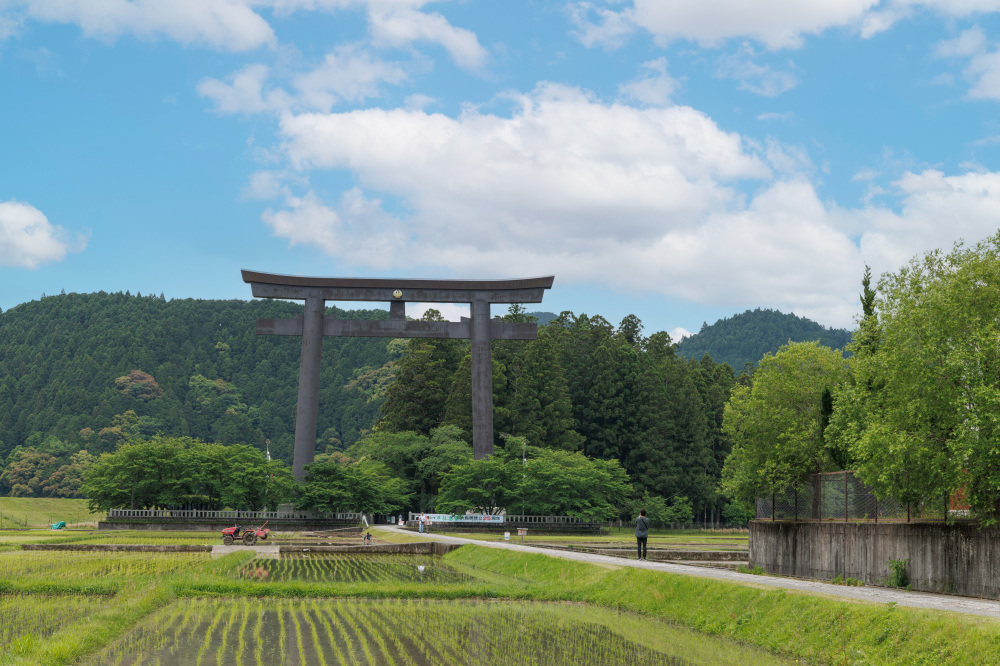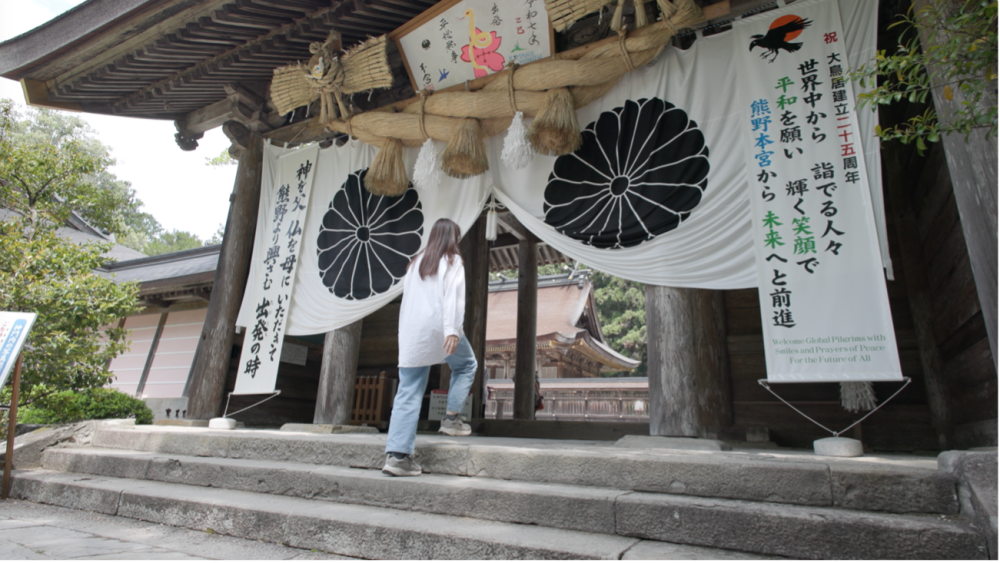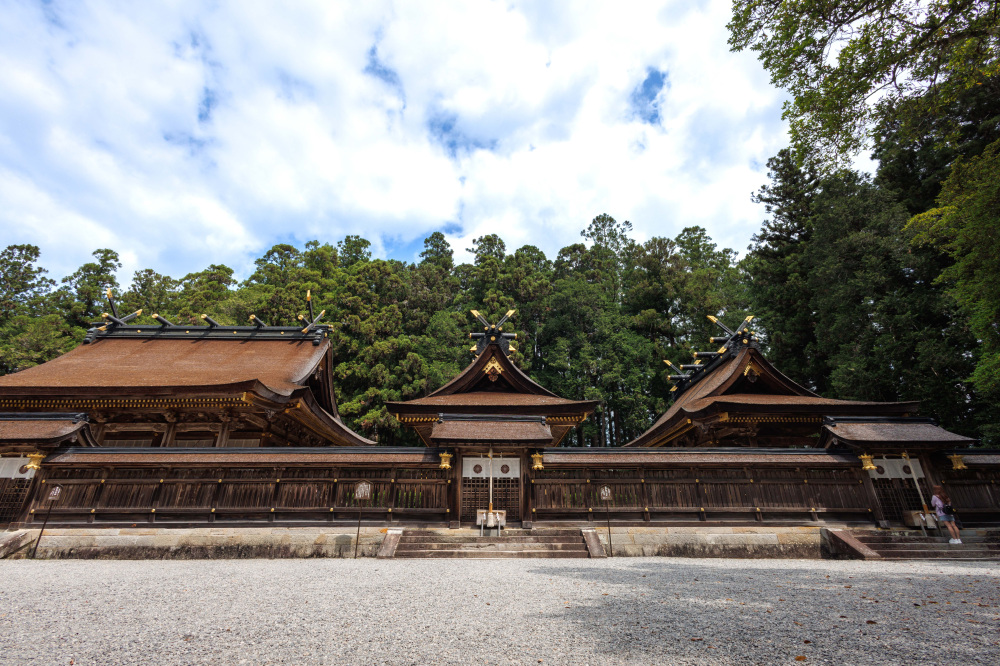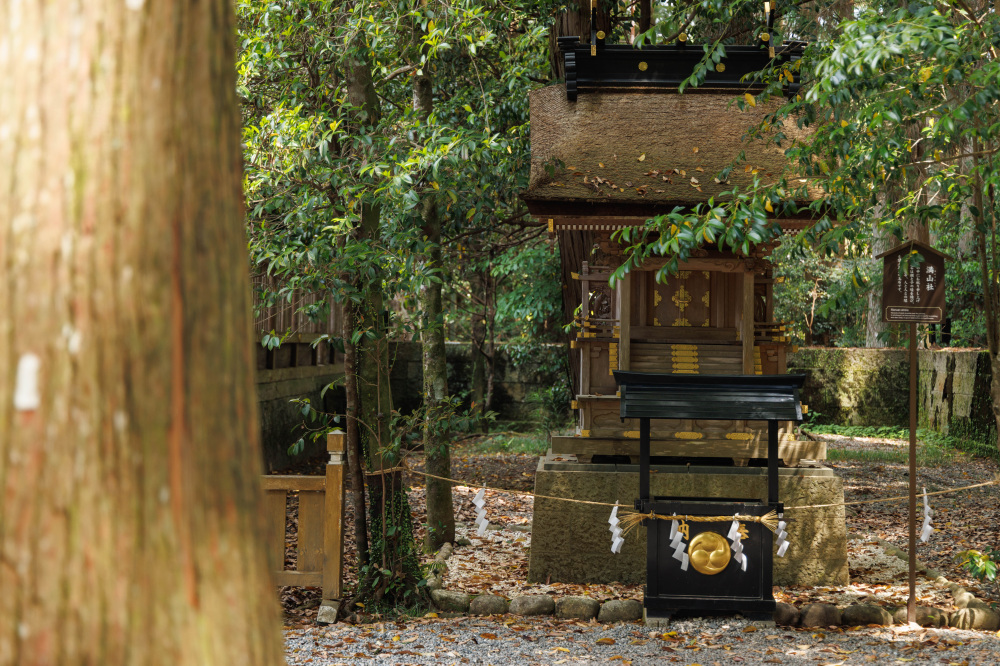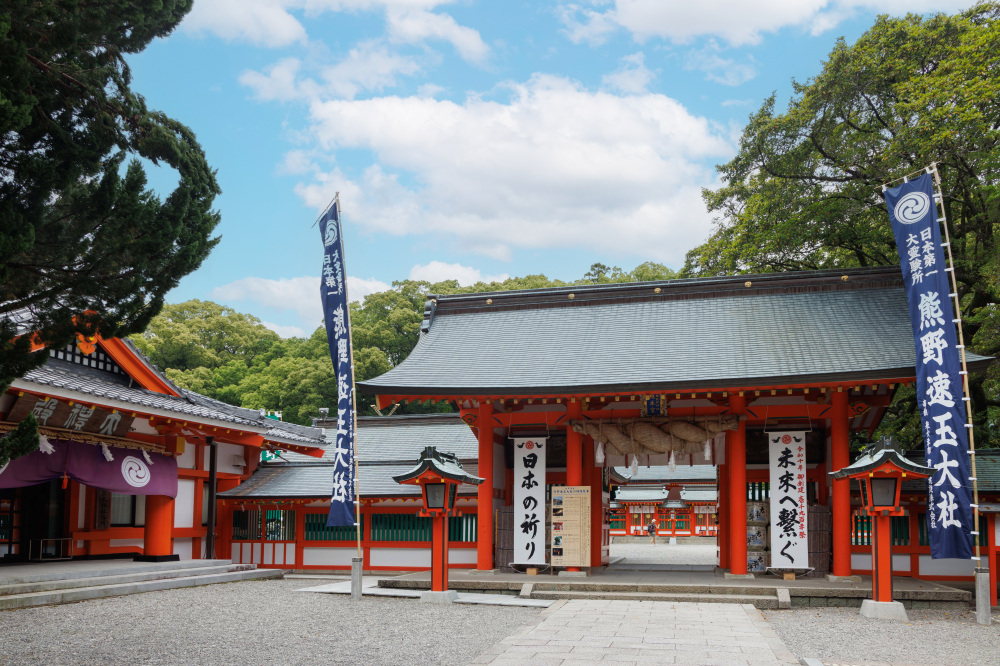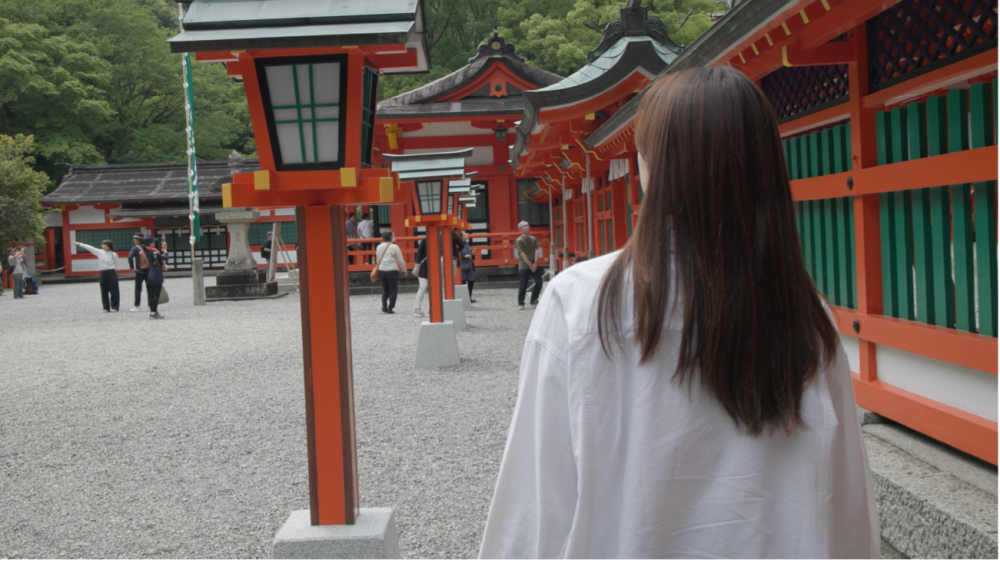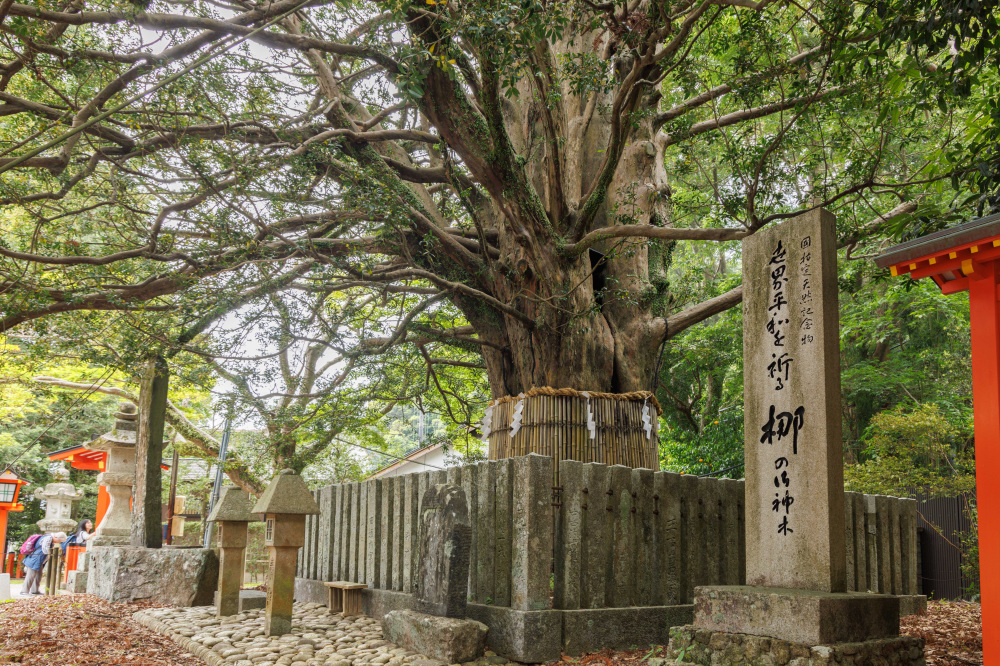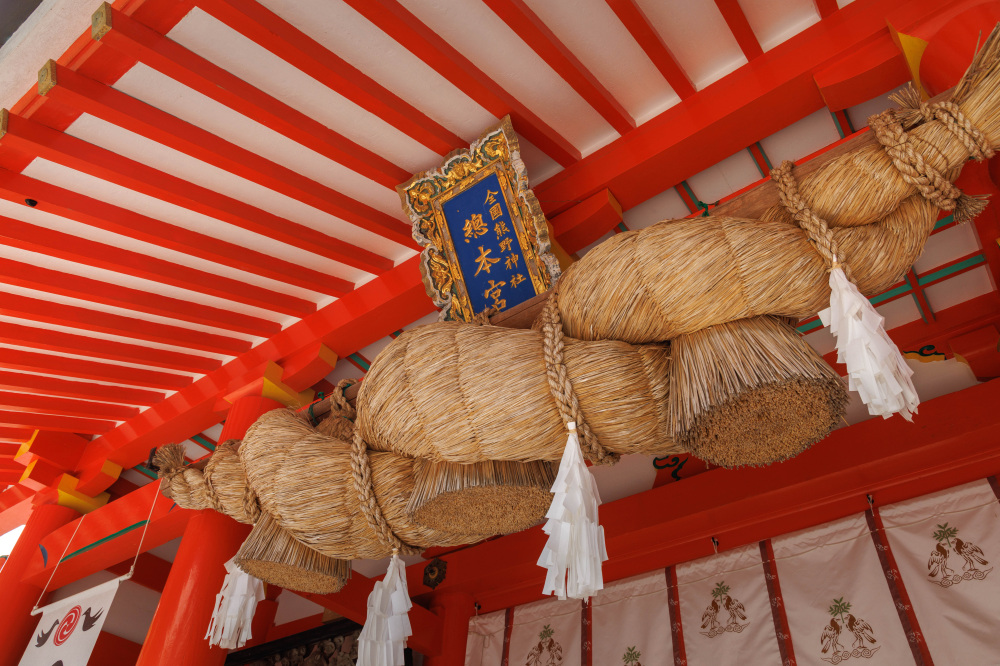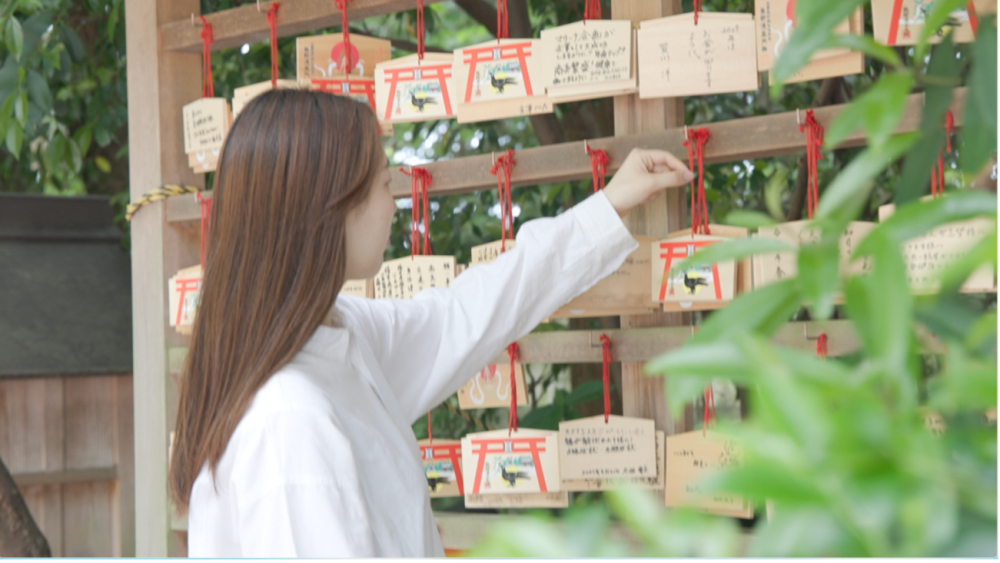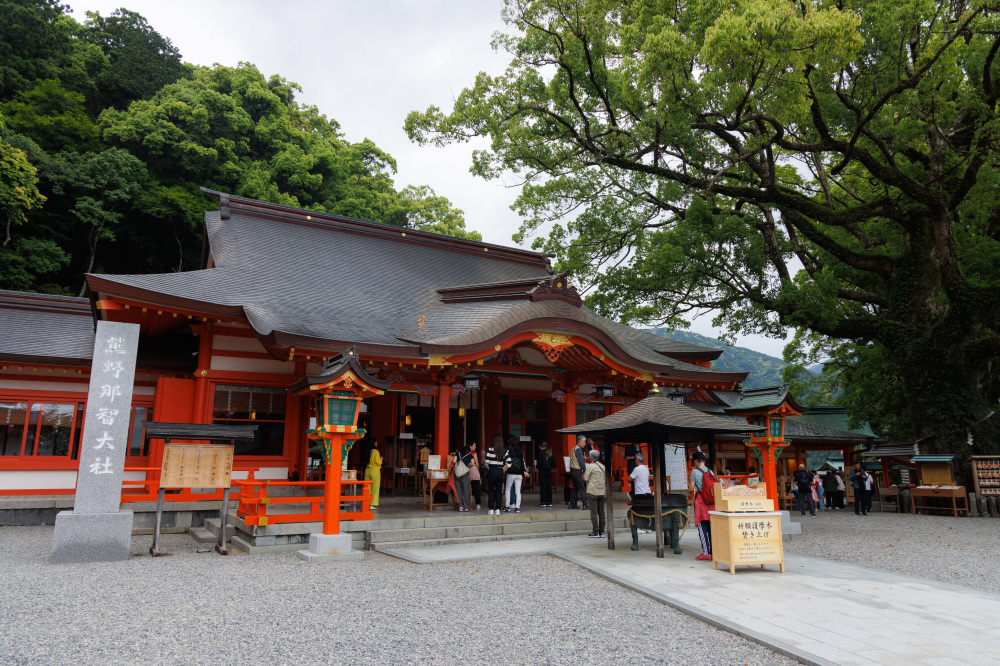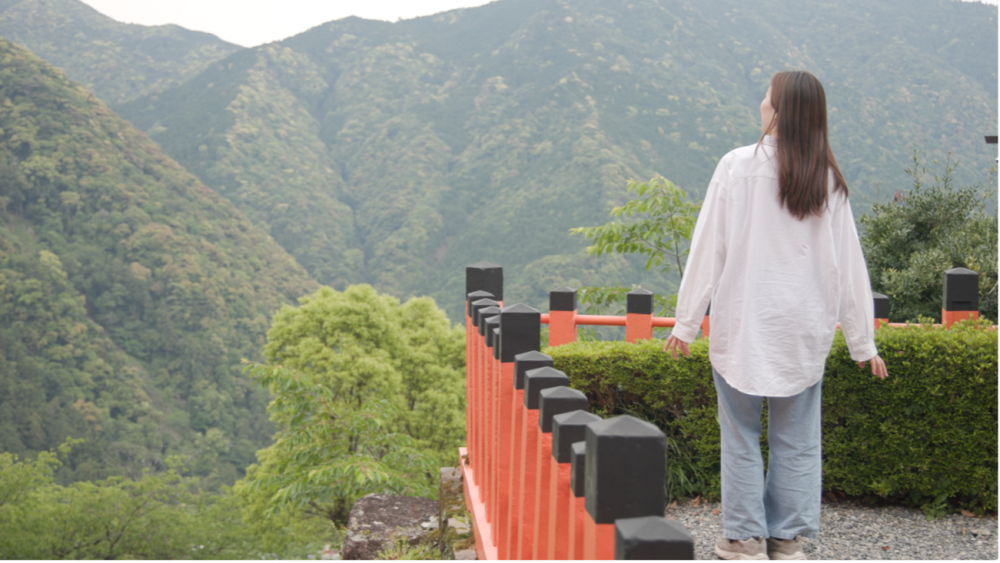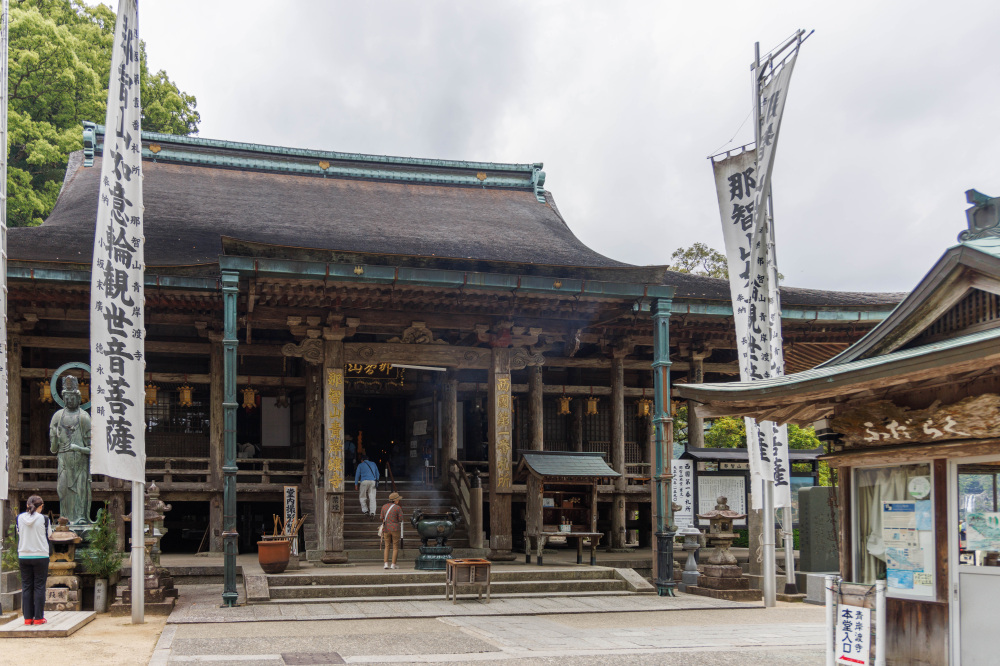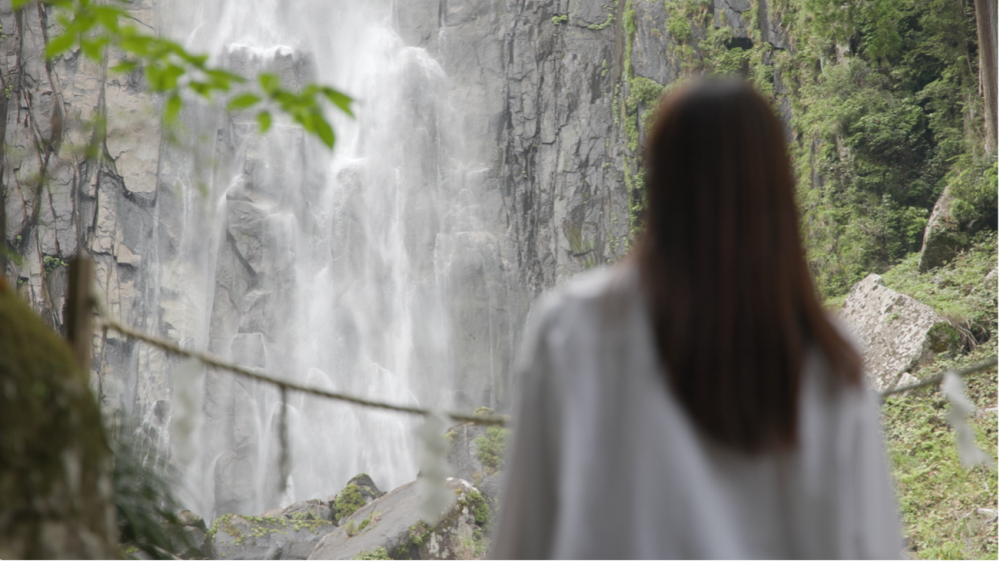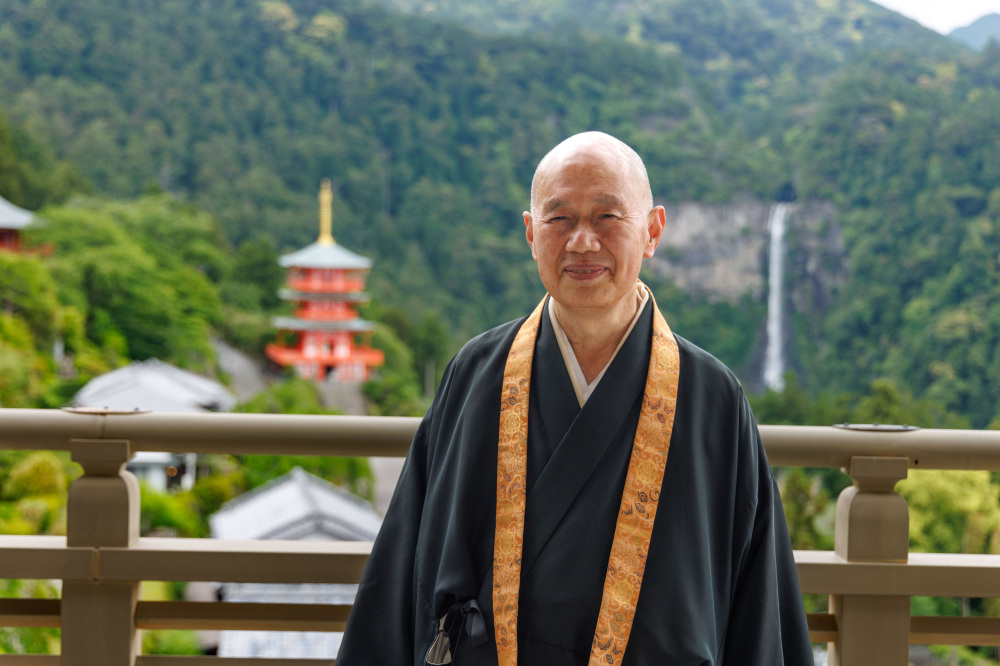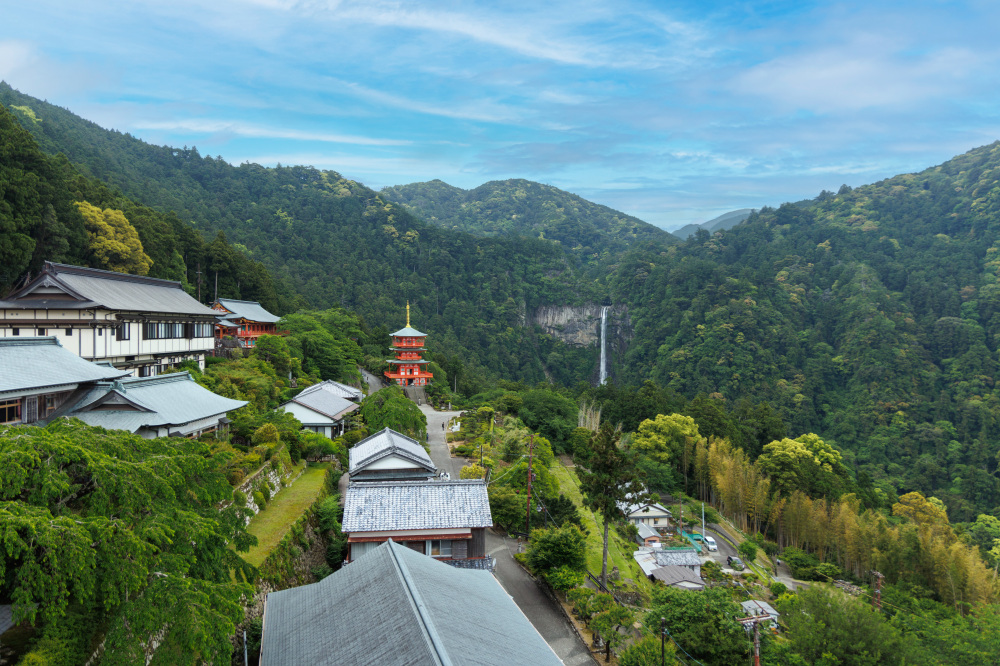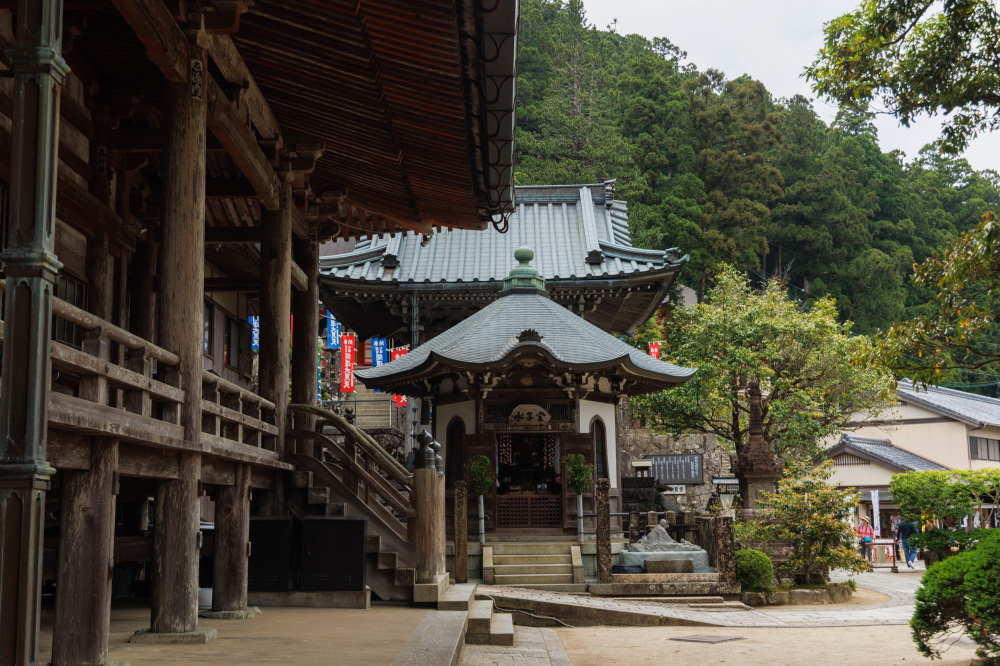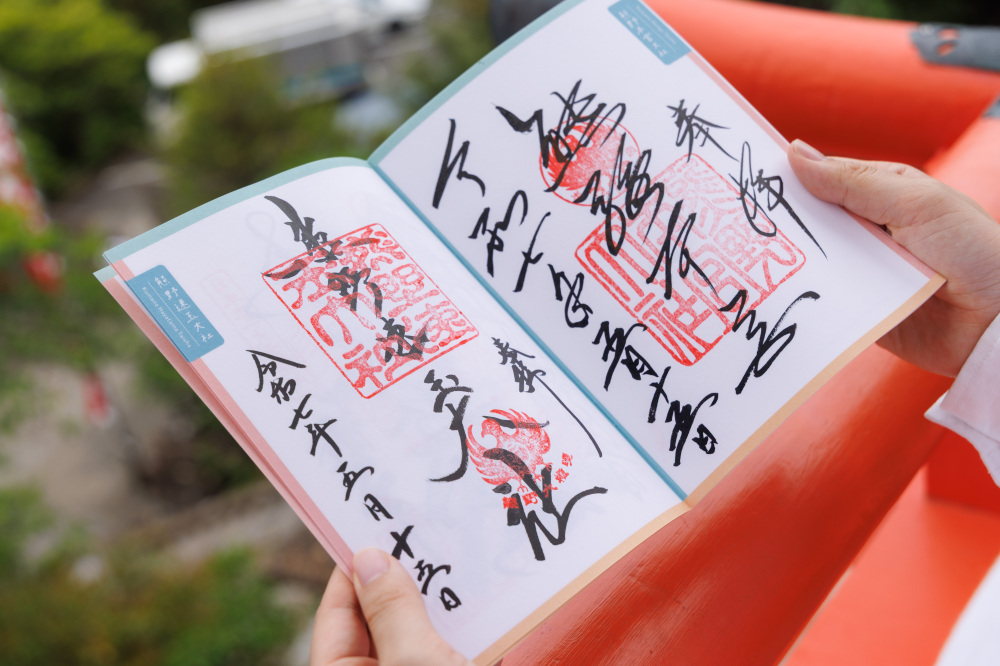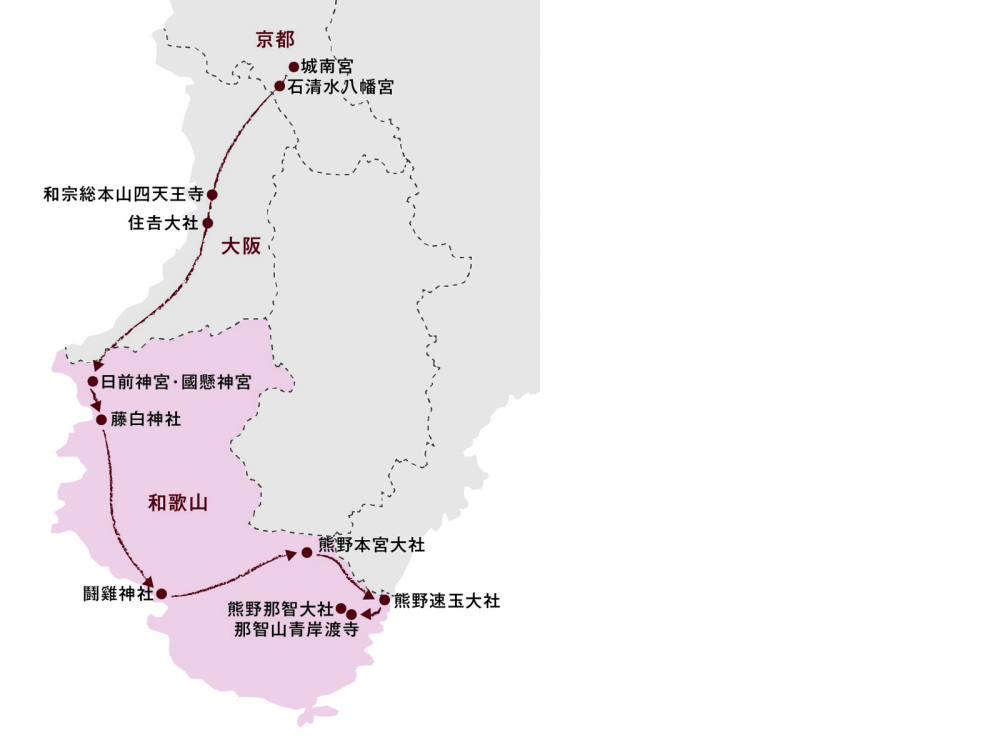Journey along the remains of the Kumano Goko: Walk the Kumano Kodo, road of prayer
[Goshuin (Seal Stamp) Tour of the Kumano Goko]
![Journey along the remains of the Kumano Goko: Walk the Kumano Kodo, road of prayer[Goshuin (Seal Stamp) Tour of the Kumano Goko]](/lsc/upfile/article/0000/0337/337_1_l.jpg)
The Kumano Kodo refers to pilgrimage routes that take you from Kyoto and other locations to the Kumano Sanzan (Kumano Hongu Taisha Grand Shrine, Kumano Hayatama Taisha Grand Shrine, Kumano Nachi Taisha Grand Shrine, and Nachisan Seiganto-ji Temple). Among these routes, the Nakahechi and the Ohechi are registered World Heritage, part of the “Sacred Sites and Pilgrimage Routes in the Kii Mountain Range.” These trails have long been considered “roads of resurrection,” carrying people’s prayers and guiding them to a place of rebirth. Notably, the Kumano Goko, a sacred journey taken by nobles from Kyoto to Kumano, was the very beginning of Kumano Kodo pilgrimage.
A sacred land of resurrection that nobles risked their lives to visit
The “Kumano Goko” refers to a grand pilgrimage taken by retired emperors and Dharma Sovereigns (retired emperors who took Buddhist vows) that began in Kyoto, took them through Osaka, and finished at the Kumano Sanzan (Kumano Hongu Taisha Grand Shrine, Kumano Hayatama Taisha Grand Shrine, Kumano Nachi Taisha Grand Shrine, and Nachisan Seiganto-ji Temple). It is said that this pilgrimage was the start of tourism in Japan. The history of the Kumano Goko begins with a pilgrimage made by Retired Emperor Uda in around 900 AD, and for the next 370 years or so many retired emperors and Dharma Sovereigns made more than 100 journeys here, including retired emperors Shirakawa, Toba, and Goshirakawa. Those who made the Kumano pilgrimage were believed to be “born again” by traversing the precipitous road; this belief gradually spread from the nobles to the samurai and commoners, leading to a huge surge in popularity in around 1600. At this time, the trails became known as the “Kumano Pilgrimage of the Ants,” because the numerous pilgrims resembled a long line of ants. Even now, people are drawn to pray to the deities of Kumano on this “road of prayer and rebirth.”
Why did the retired emperors make Kumano their destination?
The emperors of this period deeply venerated Ise Grand Shrine, which worships their ancestor, the sun goddess Amaterasu Omikami. Because of this, the retired emperors chose the gods and buddhas of Kumano, bringers of advantages in this life and peace in the next, as the recipients of their prayers. The Kumano Pilgrimage was not just a religious ceremony—it was a journey asking for peace for the retired emperors and their people, and for their rebirth. During his lifetime, Retired Emperor Goshirakawa is said to have made the pilgrimage 33 times. The number 33 has a symbolic meaning in Kannon’s efficacy (worship of Kannon, the bodhisattva of compassion). Nachisan Seiganto-ji Temple, the final destination of the Kumano Goko, is also the first of the sacred sites of the Saigoku (“Western Provinces”) 33 Kannon Pilgrimage, which takes you around sites of Kannon’s efficacy. This tells of a world of devout belief, where the Kumano faith and Kannon’s efficacy were integrated.
The Kumano Goko, starting from Jonangu in Kyoto
Retired Emperor Shirakawa, who abdicated in 1086, wielded real power in politics as the retired emperor. During this time, he constructed a magnificent imperial villa in the south of Kyoto, known as “Toba Rikyu (Jonan Rikyu).” This became the starting point of the Kumano Pilgrimage, and successive retired emperors traveled from here to the Kumano Sanzan. The Kumano Goko was a challenging journey: a 600 km round trip over 20 to 30 days. Because of this, it was essential for the retired emperors to purify their bodies and carry out rituals to prepare their minds for around seven days before their departure. Every morning and evening of their stay, they would bathe in cold water (“mizugori”) and change into white clothing. After this, a court diviner—a traditional Japanese shaman—would speak words of purification, praying for the retired emperor’s safe journey. This was the start of a journey of prayer and rebirth.
[A conversation with Head Priest Toba of Jonangu]
The landscapes of Kumano that impressed even Fujiwara no Teika
“Retired Emperor Go-Toba held political power from the second half of the 10th century to the start of the 11th. It is said that Fujiwara no Teika, who accompanied him on his fourth Kumano Pilgrimage, was excited for his first long journey and departed in high spirits. Teika, who was blessed with a genius for waka poetry, visited Sumiyoshi Taisha where the god of waka was worshipped. He was also deeply impressed by the beauty of the Kii sea, visible from a high ridge, and he recorded his thoughts in his diary, the Chronicle of the Bright Moon. This was heart-stirring scenery, even for the people of the Heian Period who lived alongside nature. I’m sure that new inspirations for the body and mind await the people of this day and age who walk this path,” Mr. Toba, Head Priest of Jonangu, told us. On top of this, he himself visited the Kumano Sanzan in the spring of this year and enjoyed the sight of the cherry blossoms in full bloom. “It’s a place that is wonderful no matter how many times you visit, where you can feel the passing of the four seasons,” he said, with a gentle smile.
To the Kumano Kodo, with proof of prayer in hand
“Records of the retired emperors and imperial princesses that visited Kumano often mention them receiving ‘treasure seals (hoin)’ and ‘nagi leaves’,” Mr. Toba told us. Because they retain their greenery without dulling in color, even when they dry out, nagi leaves are symbols of vitality, and have been treasured as omamori talismans gifted from the gods of Kumano since ancient times. “A treasure seal is, as its name suggests, a seal. According to records, yamabushi (adherents of mountain worship who practice in the mountains) would press these seals to the foreheads of pilgrims. Originally, a treasure seal was only granted during special events, but they could be received at any time in Kumano. Because of this, Kumano is also said to be the birthplace of the ‘goshuin’ (a stamp received as proof of a visit to a shrine or temple). These are still received today as proof of divine protection. Goshuincho (a special book for recording seals) in hand, ancient pilgrims could enjoy a serene pilgrimage by receiving the seals of shrines and temples that they visited.” Pilgrims also receive an Ichigan Joju Omamori (literally “one wish fulfilled talisman”), which evokes the former rituals of departure in Jonangu. Their shape, modeled on the hexagonal pilgrim’s staff, leaves an impression. Write your wish on the inside of the omamori and wear it as you start your journey on a Kumano Goko just for you.
The ninety-nine oji, guideposts of the Kumano Kodo
Small shrines known as oji stood along the Kumano Kodo, and pilgrims would offer prayers at each of them as they walked the pilgrimage trail. There are various theories about these shrines, but it is said that the original deities of the land, worshipped by the local people, came to be housed in these subsidiary shrines that presided over the milestones of the journey during the prosperity of the Kumano Goko in the Heian Period. The oji, where people performed ceremonies and dedicated dances, sublimated the journey itself into “continuous prayer.” Even now, the remains of the oji along the path serve as quiet guideposts, connecting the past with the present. Following the oji to reach Kumano offers a profound pilgrimage experience that will bring you face-to-face with nature and connect your prayers across time.
Memories of pilgrimages that tell of stone paving and forests
After you leave Jonangu, the start of the Kumano Goko, you’ll find that the remnants of the prayers and footsteps of pilgrims past still persist on the trails to the Kumano Sanzan. Among these, the Nakahechi, where precipitous mountains and calm satoyama scenery intertwine, is a route that retains much of the original scenery of the Kumano Pilgrimage. It is symbolized by the Daimon-zaka, which leads to Nachi. Walk along this approximately 650-meter shrine approach of stone paving and cedar trees and find your heart and mind become naturally clearer, making you feel even more like a pilgrim. The remains of the final oji, Tafuke-oji Shrine, are a witness of a history interwoven of worship and culture.
[Kumano Hongu Taisha Grand Shrine]
Take a step forward in Kumano, the land of resurrection
Kumano Hongu Taisha Grand Shrine is the first sacred site reached by pilgrims of the Kumano Goko. This shrine is a symbol of “resurrection”—of throwing away your past and moving toward the future—and it is said that the retired emperors and Dharma Sovereigns asked for spiritual rebirth here. The old shrine stood on Oyunohara, a sandbank of the Kumano River, and it is thought that the pilgrims purified their bodies in the waters of the river when they visited this sacred site. The Kumano Pilgrimage wasn’t just an act of prayer to the gods; it was also a journey to face one’s inner self and make a fresh start. The Hongu main shrine embodies this concept, and quietly and profoundly brims with the unchanging presence of prayers that transcend time.
[Kumano Hayatama Taisha Grand Shrine]
The eternal Kumano Pilgrimage: touching the heart
Kamikura-jinja Shrine stands halfway up the steep Mt. Gongen-yama (Mt. Kamikura), near the mouth of the Kumano River. The shrine’s object of worship, the sacred Gotobiki-iwa Rock, is said to be the spot where the gods of Kumano descended, and the faith created from this still lives in this area. The current Kumano Hayatama Taisha Grand Shrine was constructed to spread the Kumano Gongen (gods), who came down to Mt. Kamikura, and their teaching to the people in the area. In Kumano Gongen worship, which brings together gods and buddhas, the Hayatama Okami (god) is connected to Yakushi Nyorai, the Medicine Buddha, said to offer freedom from suffering and worldly desires. Even now, if you stand in this shrine, it will seem that the determination to undertake a journey and a calm readiness for rebirth will stay, quietly, in your heart.
[Kumano Nachi Taisha Grand Shrine and Nachisan Seiganto-ji Temple]
A great waterfall and the door to Nirvana, guided by Kannon
Kumano Nachi Taisha Grand Shrine was said to be a sacred site on the Kumano Goko route connected with the karma of the “transient world” (this life). Nachi Waterfall itself had been considered a deity since ancient times, and it was believed to have a power that acted as the source of all life and physical items, rooted in nature worship with waterfalls as objects of veneration. The neighboring Nachisan Seiganto-ji Temple is the first sacred site of the Saigoku (“Western Provinces”) 33 Kannon Pilgrimage. This temple worships the Thousand-Armed Kannon, and embodies a fusion of the Kumano faith and Kannon’s efficacy. Standing before the roar of Nachi Waterfall will naturally provide you with a calm time to reconsider your inner self. This is still a space where gods and buddhas coexist, and more of the original form of the Kumano faith remains in the Nachi area than anywhere else.
[A conversation with Chief Abbot Takagi of Nachisan Seiganto-ji Temple]
Head to Kumano to find solace. The “Goko” (imperial visit) for those of us living in the modern day
“I believe that the people who come to Kumano are seeking solace,” Mr. Takagi, Chief Abbot of Nachisan Seiganto-ji Temple, told us. The Kumano faith, which worshipped the gods and buddhas together, quietly continued in its vast natural world. It is said that the Kumano Goko pilgrimage was made over 100 times during the approximately 370 years from 907 to 1281. “Everyone feels suffering and pain, no matter what the era. The retired emperors of the past were no different from us today.” The Chief Abbot explained that the essence of the Kumano Pilgrimage is for a person with worldly desires to enter the vast world of nature, face gods and buddhas, and reconsider themselves. Our current age is one in which people search for mindfulness and spiritual retreats. “Kumano is a place that accepts everyone, without discrimination,” Mr. Takagi said, with a gentle smile.
Tolerant and open-minded, Kumano accepts everyone
Since ancient times, the Kumano area has not upheld restrictions such as being forbidden to women, and has accepted everyone, regardless of their status or ideology. “Kumano has acknowledged the ‘resurrection’ of all the people who visit, regardless of their faith, ethnicity, and gender, for over 1,200 years. It is an iconic place where gods and buddhas coexist, even today. Looking at the world now, this is an age of ceaseless competition, but Kumano is a land of tolerance, where many different religions and people respect each other. I hope that lots of people will visit Kumano and feel that spirit of mutual respect, and share world peace from Kumano." This is an era where we value diversity, and so Kumano could become a symbol of this. As Kumano is a place for people to relax minds and hearts tired from their everyday life, we hope you will take this chance to visit.
Column
Goshuin (seal stamp) Kumano Goko tour
The “goshuin (seal stamp) Kumano Goko tour” is a new project that started in September 2024. Participants travel around sites related to the Kumano Goko, from Kyoto to Kumano, collecting goshuin stamps as proof of their visits. You can receive goshuin from 11 participating shrines and temples, and you can also receive different commemorative stickers at five of these (Jonangu, Kumano Hongu Taisha Grand Shrine, Kumano Hayatama Taisha Grand Shrine, Kumano Nachi Taisha Grand Shrine, and Nachisan Seiganto-ji Temple)! (Finishes when the stickers run out)
Enjoy a route that connects Kyoto, Osaka, and Wakayama, evoking the Kumano Goko pilgrimage from Kyoto to the Kumano Sanzan made by historic retired emperors.
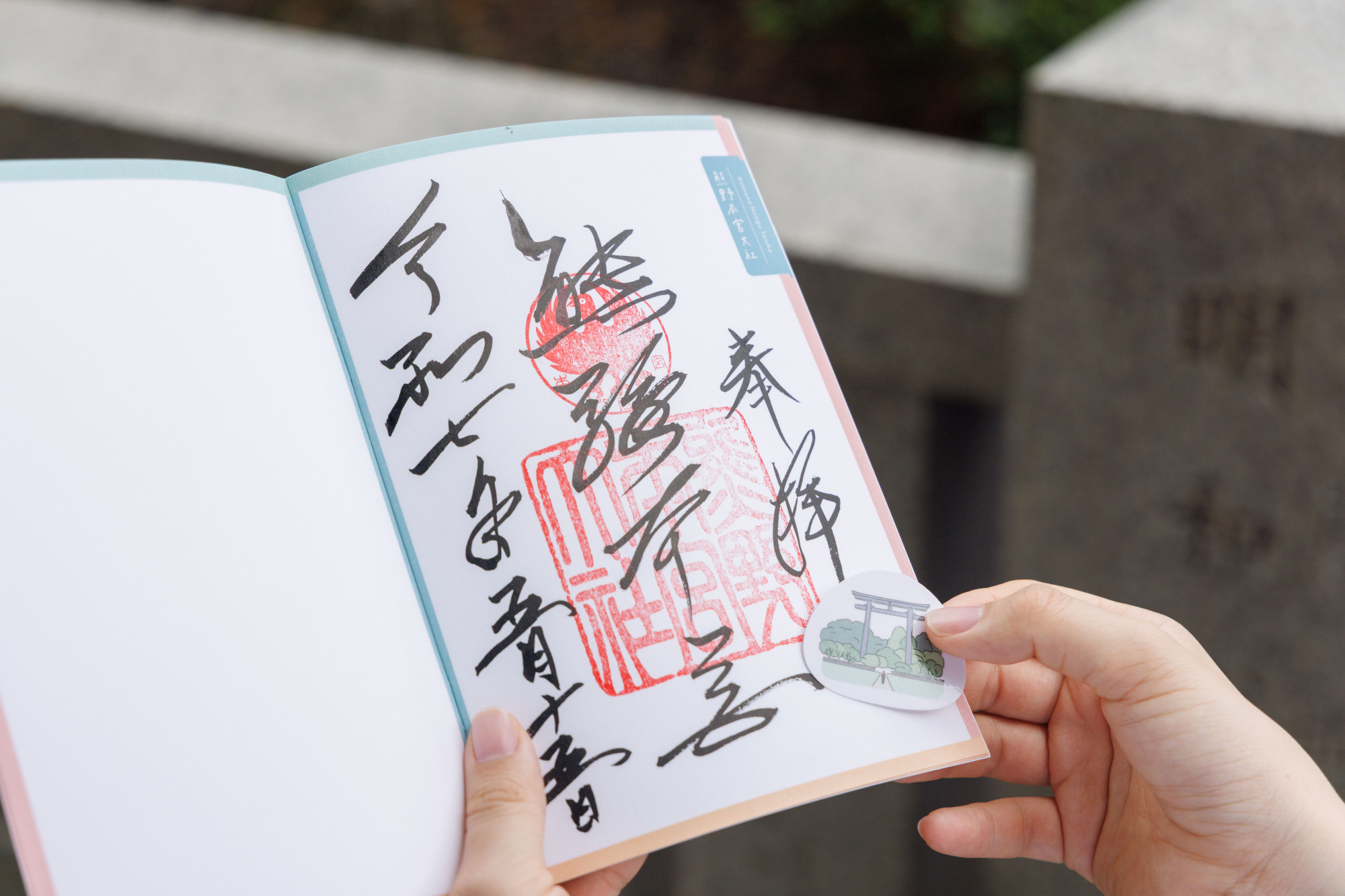
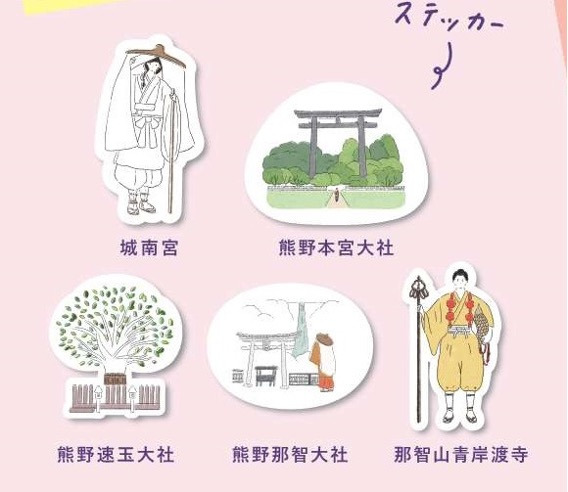
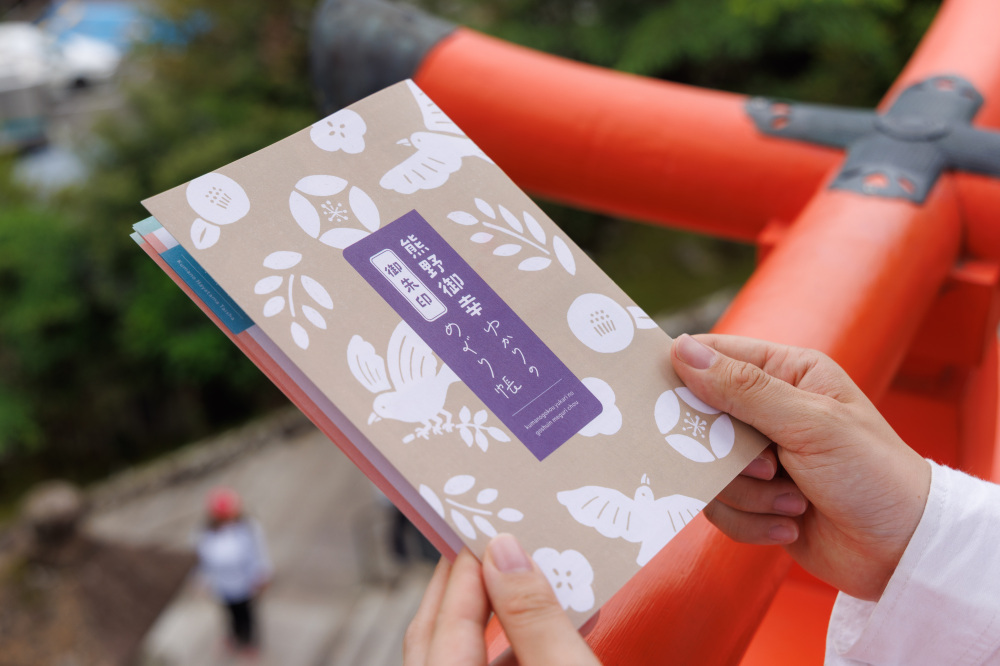
The Kumano Goko route: The journey taken by the nobles from Kyoto to Kumano
11 shrines and temples participating in the goshuin (seal stamp) Kumano Goko tour
You can obtain a goshuin (seal stamp) Kumano Goko tour stamp book by asking at any of the locations providing goshuin in these shrines and temples.
- Jonangu
- Jonangu was built to the south of the then-capital city Heian-kyo in 794 to house the guardian deity of the country and the capital. It was revered as the guardian of the imperial villa built by some of the most powerful people of the time in the first part of 1,000 AD. The main building of the imperial villa became the place where people made preparations before embarking on the Kumano Goko, readying their hearts and minds: they performed rituals of departure and set off toward Kumano down the Yodogawa River. Jonangu still attracts people who worship its god as the deity of travel and safety when moving house.
Address: 7 Tobarikyu-cho, Nakajima, Fushimi-ku, Kyoto-shi 
- View more
- Iwashimizu Hachimangu
- Iwashimizu Hachimangu, standing on Mt. Otokoyama, boasts a strategic position for transportation where three rivers merge to form the Yodogawa River. It was the custom for pilgrims on the Kumano Goko to carry out a ceremony here, offering a precious item to its god. It was deeply revered as a shrine that protected the peace of the country—even suppressing an uprising that took place in 939 with its power—and it is said that it was visited around 240 times by emperors and retired emperors. This shrine is considered the second imperial ancestral mausoleum after Ise Grand Shrine.
Address: 30 Takabo, Yawata, Yawata-shi 
- View more
- Grand Head Temple Shitennoji
- The government ordered the building of Shitennoji in 593 as Japan’s first Japanese temple in Buddha’s law. It is deeply connected with Dharma Sovereign Kazan, pioneer of the Kumano Goko—surviving records say that Kazan, who took Buddhist vows aged 19, made a donation of 100 koku of rice (approximately 18,000 liters) to this temple. The western gate, with its towering stone torii gate, has long been believed to be the equivalent of the eastern gate of the Pure Land paradise, and was also the object of worship by those on the Kumano Goko, seeking the Pure Land in this transient world. The Kumano Gongen Reihai Seki (literally “stones of worship for the avatars of Kumano”), which still stand at the Great South Gate, is where people prayed for safety on the road of the Kumano Pilgrimage. Meanwhile, it is also said that praying here is equivalent to making the Kumano Pilgrimage.
Address: 1-11-18 Shitennoji, Tennoji-ku, Osaka-shi 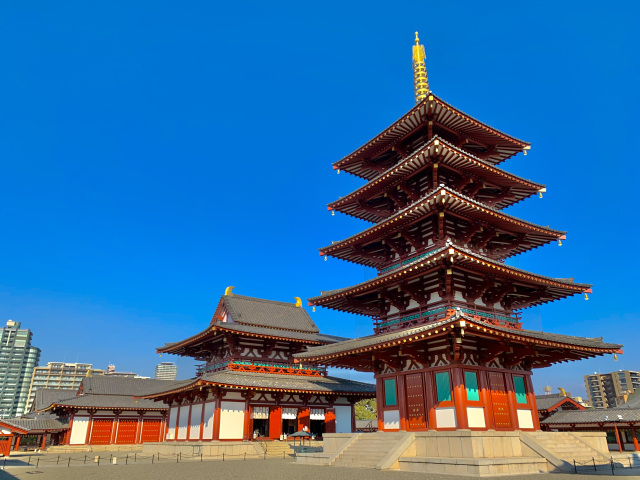
- View more
- Sumiyoshi Taisha
- Sumiyoshi Taisha has attracted the faithful who are also poetic since ancient times—as Fujiwara no Teika, who accompanied Retired Emperor Go-Toba on the Kumano Goko, wrote in his Record of an imperial pilgrimage to Kumano: “Visiting the shrine of Sumiyoshi, god of waka, was a joy for me.” At the time, the shrine was constructed near a white beach with green pines, and its scenic natural beauty could surely stir the poetic hearts of an entire group of visitors. Tsumori-oji Shrine, one of the ninety-nine oji built along the Kumano Pilgrimage trails, is still worshipped today with Shingu Shrine, a subordinate shrine built within the grounds.
Address: 2-9-89 Sumiyoshi, Sumiyoshi-ku, Osaka-shi 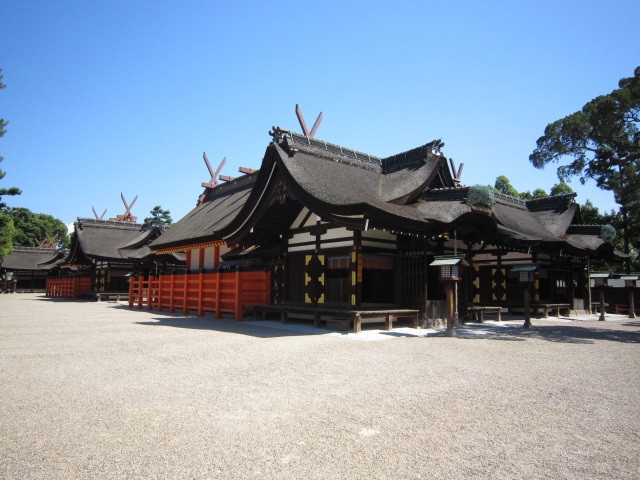
- View more
- Hinokuma-jingu Shrine and Kunikakasu-jingu Shrine
- These are the shrines of the highest status in Wakayama Prefecture, said to have been founded more than 2,600 years ago. The two great shrines—Hinokuma-jingu Shrine and Kunikakasu-jingu Shrine—are located within the same grounds, which is very unusual in Japan. Both shrines worship Amaterasu Omikami. According to the Chronicle of Japan, Japan’s oldest extant account of its history, the mirror that is an object of worship in these shrines is said to be a precious mirror second only to the three sacred treasures of the imperial regalia of Japan. These shrines have such a high status that the most careful worship of the Kumano Goko is carried out here.
Address: 365 Akizuki, Wakayama-shi 
- View more
- Fujishiro Jinja Shrine
- This is one of the shrines with the highest status among the group of small shrines associated with the Kumano Gongen (ninety-nine oji). Retired emperors would definitely stay here during their Kumano Goko, and special events would take place, such as kagura (a dance that is one of Japan’s oldest traditional performing arts), kyokuyo (a ritual of Buddhist scriptures), poetry gatherings (gatherings to create traditional Japanese verses), and sumo wrestling. An original Buddha from the Kumano Sanzan, said to have been made from the mid-11th century to the end of the 12th century, can be found in the Gongendo hall in the grounds, telling of the shrine’s close links to Kumano.
Address: 466 Fujishiro, Kainan-shi 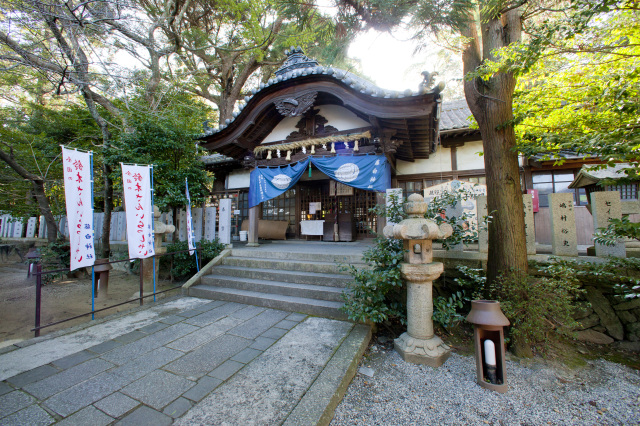
- View more
- Tokei-jinja Shrine
- Built in 419, this shrine became a sort of auxiliary shrine welcoming people to Kumano’s three representative shrines between around 1089 and 1129, when people were walking the Kumano Goko again and again. During the Kumano Goko, retired emperors would stay here for a few days asking for their heartfelt wish to be granted. The shrine’s name is connected with the Tale of the Heike, a famous Japanese epic of the middle ages. Just before the Battle of Dan no Ura, which launched the age of the samurai, Tanzo, who controlled the Kumano Sanzan (from which both sides had demanded reinforcements), set red and white cocks to fight each other. Based on the result of the cockfighting (divine will), he joined the side of the samurai and led them to victory. This old story is the origin of the name “Tokei,” written with the characters for “cockfighting.”
Address: 1-1 Toyo, Tanabe-shi 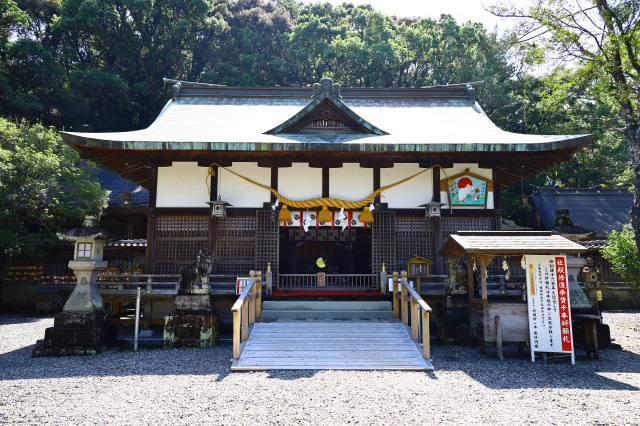
- View more
- Kumano Hongu Taisha Grand Shrine
- The divinity of this shrine, which pilgrims reached via the Nakahechi route (which had a stretch of particularly steep mountain paths) of the Kumano Kodo, was such that Fujiwara no Teika, who accompanied Retired Emperor Go-Toba on the Kumano Goko, wrote that he “couldn’t suppress my tears” in his Chronicle of the Bright Moon. From ancient times to the middle ages, this shrine stood on a sandbank of the Kumano River called Oyunohara, a sacred place that only people who soaked their clothes and purified their bodies in cold water were permitted to visit. The main shrine was relocated to a nearby mountainside after a terrible flood in 1889, but still retains the sacred character of one of the Kumano Sanzan.
Address: Hongu, Hongu-cho, Tanabe-shi 
- View more
- Kumano Hayatama Taisha Grand Shrine
- The origin of faith in this shrine was the nature worship that made the sacred Gotobiki-iwa Rock (on Ama-no-iwa-tate) on Mt. Kamikura into an object of reverence. This is said to have started in 128, when three representative Kumano deities who descended onto Ama-no-iwa-tate (Kumano Hayatama no Okami, Kumano Fusumi no Okami, and Ketsu Mimiko no Okami) were enshrined here. From the second half of the 11th century to the end of the 12th century, when the Kumano Goko was at its most popular, pilgrims could also see the sacred Nagi tree planted by Taira no Shigemori, a key figure in the warrior government, in the hope of peace in the country; an idol that had been handed down over time as a national treasure; and a stone monument indicating the number of times the Kumano Goko had been completed. The proof of prayers passed down over around a millennium still remain throughout the shrine grounds.
Address: 1 Shingu, Shingu-shi 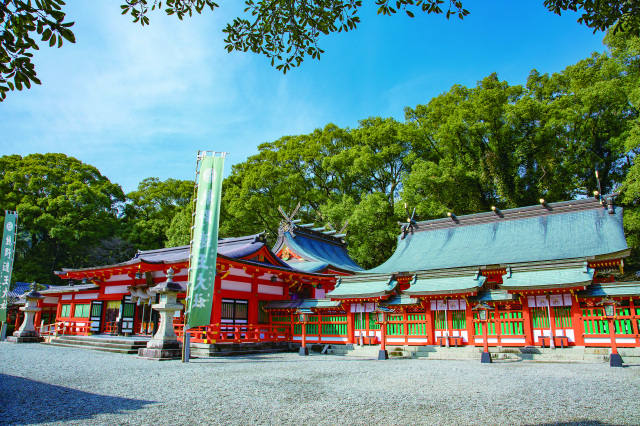
- View more
- Kumano Nachi Taisha Grand Shrine
- It's said that in 662 BCE, Kan-Yamato-Iware-Biko-no-Mikoto landed on a beach in Nachi and, seeing a gleam on a mountain, went to find its source. There, he discovered Nachi Waterfall, and revered it as a divine existence—and this is the origin of this shrine. Afterwards, guided by the Yatagarasu (a three-legged crow), divine messenger of Kumano, he was enthroned as the first emperor, Jimmu, in the area of modern-day Nara Prefecture. Kumano Nachi Taisha Grand Shrine’s main shrine worships 13 deities, with Japan’s first goddess, Kumano Fusumi no Okami, chief among these. Located halfway up Mt. Nachisan, this is the final destination of the Kumano Goko, and is a place that conveys a deep sense of spirituality.
Address: 1 Nachisan, Nachikatsuura-cho, Higashimuro-gun 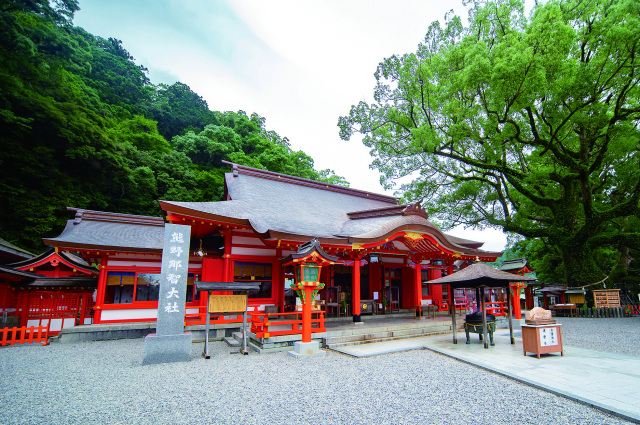
- View more
- Nachisan Seiganto-ji Temple
- This temple is located next to Kumano Nachi Taisha Grand Shrine. It was unified with the shrine until the decree to separate Buddhism and Shintoism of 1868, which split Shintoism and Buddhism and made the former the religion of the state. In 988, Dharma Sovereign Kazan, who would later visit again while on the Kumano Goko, came to the mountain and challenged himself with 1,000 days of ascetic practice, including meditation under the roaring water of the waterfall (takigyo). After completing his training, he created the Saigoku (“Western Provinces”) 33 Kannon Pilgrimage, which still attracts the faithful today. As a result of his actions, Nachisan Seiganto-ji Temple became the first sacred site of this pilgrimage. In the tiime since the temple was opened by an Indian priest known as Ragyo Shonin, its relationship with Shugendo mountain worship has become more and more profound, and in 2023, its Gyoja-do shugendo training hall, which was destroyed in the late 19th/early 20th century, was rebuilt for the first time in 150 years.
Address: 8 Nachisan, Nachikatsuura-cho, Higashimuro-gun 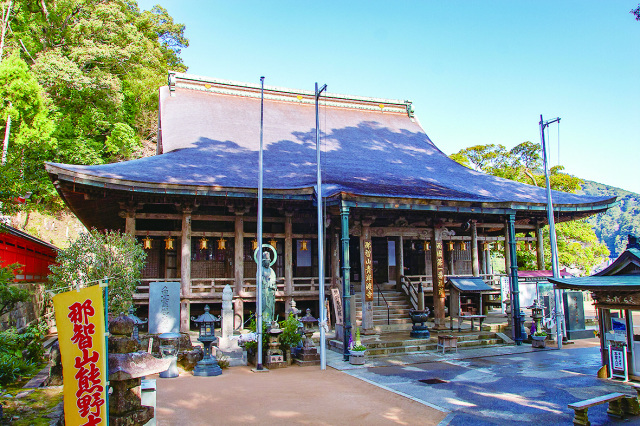
- View more
